It’s been difficult putting together this post commemorating Wade Hall’s life and meditating on his legacy. It’s not because there’s nothing to say; in fact, it’s just the opposite.
“When I began working at the Hoole Library in 2001,” wrote Archivist Donnelly Walton, “I immediately heard about our donor Wade Hall. His name is everywhere here because he generously gave us a little (or a lot) of everything you can imagine would be in a special collections library: photographs, sheet music, books, LPs, 8-tracks, wax cylinders, quilts, and manuscripts.”
Wherever you look at Hoole, Wade is there. So how do you write a memorial for someone who will never really be gone? We decided to share memories of the man and reflect on the way his collections are so fundamental to the life of W. S. Hoole Library.
Many thanks to those who contributed their thoughts, especially Amy Chen, former CLIR postdoctoral fellow, who has allowed me to quote from her forthcoming book, Miracle and Mystery: A Guide to the Wade Hall Collection.
You’ll notice that we tend to refer to Wade by his first name – probably because he was and always will be part of the Hoole family.
Donnelly Walton, Archival Access Coordinator, on Wade’s life
How can one explain Wade Hall? He described himself as a shy boy from the country. Around 2006 I had the pleasure of attending a production of Conecuh People, a play based on his book of the same name. The play is the story of his life as a child in rural Alabama. Wade and his partner Gregg Swem graciously hosted our small group that day as we ate a traditional southern dinner at the church adjacent the theater in his hometown, Union Springs, Alabama. The play was a glimpse into his life and how he—a shy, introverted child—left rural life for an education at the nearby Troy College. His subsequent drafting into the Army, then continuation of his education took him further and further from Union Springs.
A few years ago Wade donated to us about 130 linear feet of his personal papers. As we sifted through these materials I got to know Wade a lot better. I knew that he had written books, both fiction and non-fiction, and that he was the retired chair of an English department at a small, liberal arts college. His boxes are filled with evidence of a full life.
His collecting activities seem to me enough to keep one busy, especially before he retired from Bellarmine College, and yet he did so much more. There are endearing notes from school children who thanked him for reading books to them at story time; church programs and other bits and pieces one amasses after years of regular attendance and involvement; numerous acknowledgements from varied civic organizations he contributed to; playbills and programs from cultural events he attended; and materials relating to his interest in and support of LGBT issues. These and many other examples of a lifetime of mementos offer glimpses into an interesting and varied life. In addition, he kept a vast amount of newspaper clippings, journal articles, and items printed from online sources.
From my few meetings I knew that he was a gregarious collector with wide interests. Now I have a new-found understanding and appreciation for Wade Hall.
Amy Chen, from Miracle and Mystery, on Wade as donor
Wade Hall’s career grew organically from his desire to capture the voices, initiative, and expertise of the people who represented “the groundrail of the population.” But his plays, poetry, and scholarship comprise only a part of his total intellectual achievement. Hall’s collection of books, manuscripts, music, photography, and quilts, now held by the Division of Special Collections at The University of Alabama, form a second legacy.
Hall began his collection by offering fourteen books to the W.S. Hoole Library at The University of Alabama in 1990. In 1993, the first curator of Special Collections, Joyce Haguewood Lamont, persuaded Hall that the rest of his collection would be best kept in Alabama. When Hall agreed, Lamont and her colleagues at UA began to travel to Louisville. Lamont retired in 1994 after nearly forty years of service to the University. Her successors would make six more trips to Louisville, one to Troy State University, and far more to Union Springs, Alabama, where Hall moved following his retirement. A few times a year, Hall and Gregg Swem would bring additional items to Hoole Library themselves.
Clark Center, former Curator, on visiting Wade
I met Wade Hall almost 25 years ago. Joyce Lamont, Curator of Special Collections, Tom Land, and I traveled to Louisville, Kentucky to begin transferring his book collection to the Hoole Collection. Arriving late in the afternoon we talked for a while and he showed us his collection.
The next day we unloaded boxes and filled them, going room by room. When we finished packing and loading late in the day, Wade and his partner, Gregg, took us on a tour of Louisville and to dinner. As a matter of fact, tours of the area became regular events. On one occasion, he took us to lunch at a farm/restaurant in Indiana, another time, he took us to a flea market, where we watched as he looked for items for his collection, and truth to tell, we did a little looking ourselves. The last day of any trip was loading day, when Tom and I would pack the boxes in the truck, making all ready for the trip back.
Every trip was a delight, for Wade and Gregg always made us feel at home. Wade would regale us with stories, feed us well, introduce us to interesting people, and show us something different on every visit. I miss him.
Amy Chen, from Miracle and Mystery, on Wade’s manuscript collecting
While devoted to books, Wade Hall explained his interest in manuscripts by remarking that the “best letters are the letters of ordinary people who never dreamed that I would be reading their mail a hundred years later.” Hall felt that manuscripts, unlike books, contain evidence of a writer’s personality, for handwriting and how a text changes as it is drafted are details found in manuscripts that are not observable on the printed page.
Donnelly Walton, on working with Wade’s manuscripts
As the person responsible for manuscripts it’s been my pleasure through the years to work with these treasures. During my fourteen years here, he donated hundreds of boxes of manuscript collections, adding to the numerous collections he had already given us. Going through these boxes is like an adventure. What will we find? A stack of interesting letters from a soldier’s wife in World War II might be on top of some letters between two sisters in Wisconsin in the 1870s, or one of my favorites: the diary of a middle-class young woman in 1870s Ohio who loved ice skating and her dog and hated needlework.
An interesting thing about Wade’s gifts is that he always wrote a small note in pencil. It might have been the price he paid or a quick description like “interesting—young girl in Alabama, 1880s.” Over the years you become familiar with your coworkers’ handwriting—we are all very familiar with Wade’s little scribbles! I’ll miss those little scribbles in the years to come.
Amy Chen, from Miracle and Mystery, on Wade’s book collections
Wade Hall’s library is not significant only for the many important texts it contains; it also is consequential for its ability to represent the history of print culture. While Hall gathered a few Confederate Imprints alongside a much larger number of volumes published in the North during the Civil War, he also compiled extensive holdings in publishers’ bindings and pulps. Publishers’ bindings are cloth-bound books without dust jackets that were popular with middle-class readers from the middle of the nineteenth through the first few decades of the twentieth century. Working-class readers during the middle of the twentieth century primarily chose to read pulps, books that were made with low-quality paper. Hall’s large number of publishers’ bindings and pulps show that Hall invested his resources into portraying the preferences of lower and middle-class Americans: the people and places that preoccupied them; their tastes in travel destinations, religion, and cuisine; and what types of books they read. For this reason, Hall’s book collection reflects the history of the United States differently than a library of pristine first editions. The books Hall found interesting were copies of texts that were read, treasured, and widely circulated.
Allyson Holliday, Special Collections Cataloger, on working with Wade’s collections of published material
I will forever be grateful for the opportunity to process and catalog Wade Hall’s book and published materials collections. The breadth and scope of the materials he collected provides an excellent resource on southern history and culture for the UA community and beyond.
I grew particularly fond of the sheet music and cook books he donated over the years – such fun graphics, lyrics, and variety! I’m glad that I was able to make a trip to Union Springs earlier this year to visit with Wade and Gregg Swem. Wade will be missed by all at Hoole.
This is not the end of the story of Wade Hall and Hoole Library. For this blog in particular, any time we feature materials from one of his collections (and we do quite often!), you can find it categorized under Wade Hall Collection.

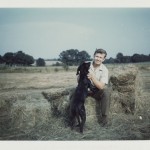
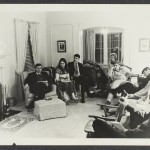
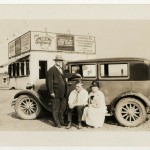
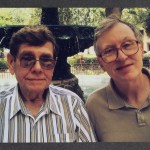
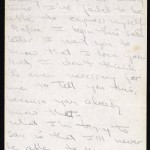
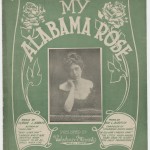
2 Responses to Remembering Dr. Wade Hall (1934-2015)